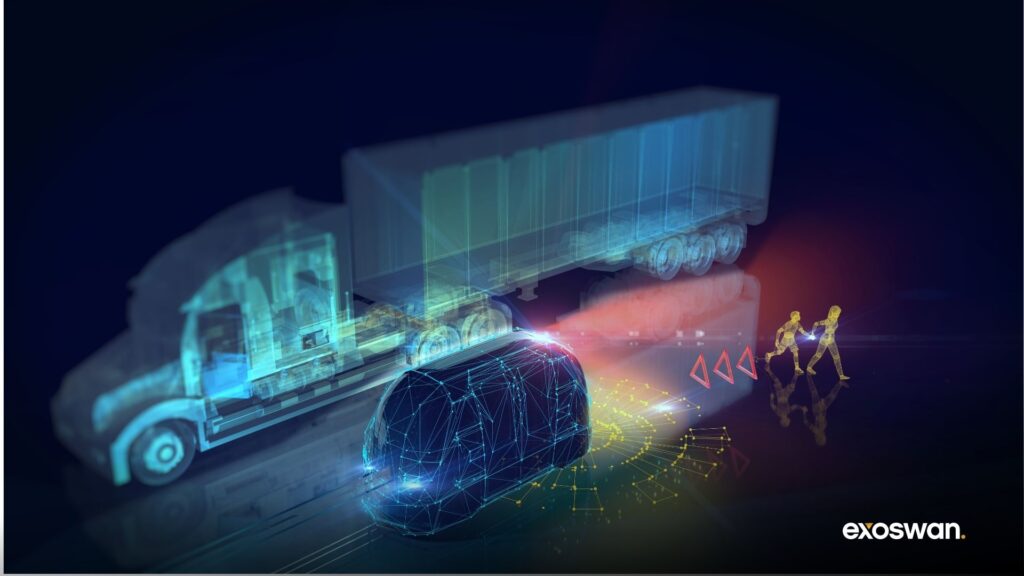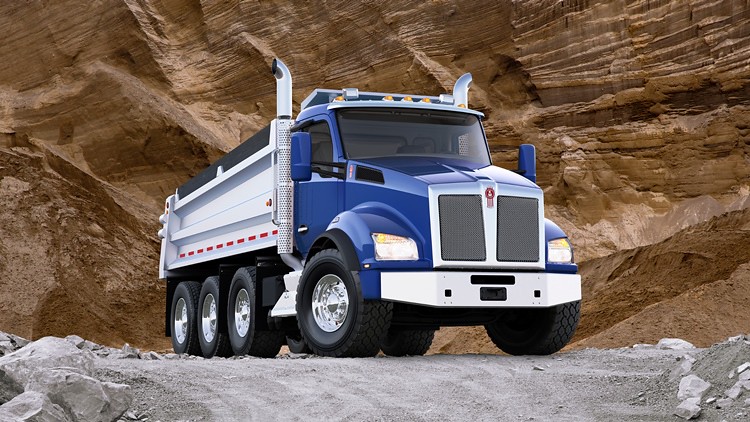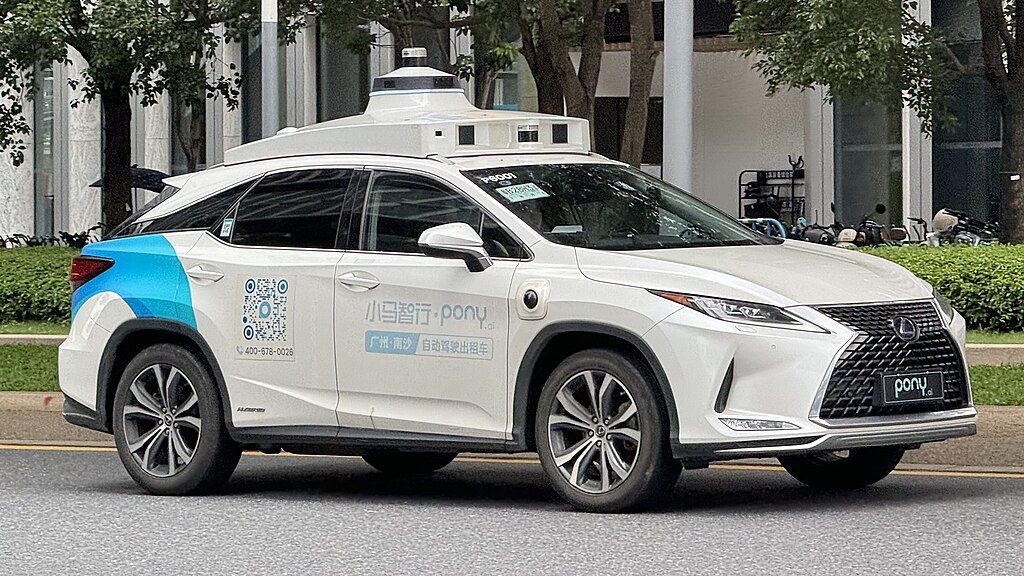Forget the “driverless cars everywhere” vision Silicon Valley once promised. After burning billions, the industry has quietly pivoted to something far more tangible: the freight yard. The AV inflection point is here, but it’s not arriving in your driveway—it’s at the loading dock and the taxi stand.
This report highlights the top autonomous vehicle stocks in the two verticals creating real, near-term value: driverless trucking and urban robotaxis.

Autonomous Trucking Pure-Plays
Trucking is the ideal near-term application of autonomous technology: predictable routes, limited variables, and a strong economic pull.
In the US, federal regulations limit a human to 11 hours of driving within a 14-hour window, meaning a ~$200,000 Class 8 truck sits idle for at least half the day. An autonomous system shatters this limit, doubles asset utilization, and lowers per-mile freight costs by an estimated 30-40%. Layer in how the US driver shortage is expected to double by 2030, and the pull from shippers is inevitable.
Autonomous trucks could capture 30% of US new truck sales by 2035 for hub-to-hub routes, compared to just 4% penetration for L4 passenger vehicles. This is a $700 billion logistics problem with clear ROI. Some call this the consolation prize—but really, it’s the beachhead.
The landscape here is shaped by three distinct go-to-market models: OEM integration, capital-light retrofitting, and asset-light software licensing.
Aurora Innovation (NASDAQ: AUR)
HQ: USA; OEM-integrated frontrunner betting on deep partnerships.
Aurora Innovation aims to become the exclusive autonomous “brain” built into trucks on the assembly line. Its “Driver as a Service” (DaaS) model is anchored by deep partnerships with trucking giants Paccar and Volvo, with hardware industrialized by Continental and powered by NVIDIA.
After logging over 3.3 million miles with safety drivers, Aurora’s methodical “crawl, walk, run” strategy hit a major milestone in May 2025 with its commercial driverless launch on the Dallas-Houston freight corridor. It’s now scaling nighttime runs and plans to expand its network to Phoenix by year-end.
Aurora is a pre-revenue, high-burn story ($201M net loss in Q2 2025), but its strong balance sheet provides a cash runway into mid-2027. Its OEM integration strategy arguably offers the greatest upside, but that strength is also its Achilles heel. This dependency was highlighted in mid-2025 when a partner requested human observers return to the cab over prototype parts, a stark reminder that Aurora’s timeline isn’t entirely its own. An investment here is a bet on both Aurora’s tech and the unwavering commitment of its partners.
Kodiak AI (NASDAQ: KDK)
HQ: USA; Nimble retrofit specialist achieving early commercial traction.
Where Aurora goes deep, Kodiak goes wide. Its capital-light, vehicle-agnostic retrofit model avoids long OEM development cycles, enabling faster market entry and—critically—early revenue.
Kodiak’s “get paid to learn” strategy is a savvy hedge. In 2024, it became the first company to deliver and be paid for driverless trucks, running 24/7 on private roads for Atlas Energy Solutions. This provides immediate revenue, reduces cash burn, and refines its AI in a controlled setting—with every learning directly transferable to public highways. This dual-use approach, which includes defense contracts, makes the company far more resilient.
Kodiak went public via SPAC in September 2025, confirming its post-revenue status with a reported $16.1 million in trailing-twelve-month revenue as of June. The long-term risk is that factory-integrated solutions from competitors could eventually squeeze the addressable market for retrofits.
PlusAI (NASDAQ: CCIX → TBD)
HQ: USA; Asset-light software play licensing its technology.
PlusAI offers the purest software investment thesis in the sector: to become the “Intel Inside” for autonomous trucks. The company avoids manufacturing and fleet operations entirely, instead licensing its “SuperDrive” system to a global network of OEMs like TRATON GROUP, Hyundai, and IVECO, and logistics leaders like Amazon.
Targeting a 2027 commercial launch, PlusAI is building a formidable data moat with over 5 million real-world miles logged across the U.S., Europe, and Asia. It’s set to go public in Q4 2025 via a SPAC merger that will fund operations through its launch.
The entire model hinges on one question: will the world’s largest truck makers ultimately choose to buy this software or build it themselves? An investment in PlusAI is a bet that its technology will maintain enough of a lead, making it cheaper and better for OEMs to partner than to compete.

Robotaxi Operators
While personal cars are stuck in L2+ autonomy for the foreseeable future, robotaxis are the more immediate consumer angle.
In the US, robotaxis have gained a foothold in five cities: Phoenix, SF, LA, Austin, and Atlanta. This progress is encouraging, but so far, it hasn’t been a platform business; it’s been a capital-intensive, city-by-city grind.
What makes this grind potentially worth it is the unit economics. A human driver for Uber or Lyft takes home 50-75% of every fare. The entire robotaxi business model is built on capturing that margin. On a $20 trip, that’s $10-$15 that can now go toward paying down the high-tech vehicle itself.
This model only works with extreme asset utilization, which is why the city-by-city grind is vital: achieving the fleet density and rider demand to keep cars running 16+ hours a day is the only way to make the math work.
And it’s here that China is playing a different game. Across the globe, a top-down, state-supported push is enabling companies to achieve that critical scale far more rapidly—in over 15 cities and counting.
Waymo (via Alphabet – NASDAQ: GOOGL)
HQ: USA; Undisputed tech leader with a massive data moat.
Backed by an estimated $30 billion from Alphabet, Waymo’s decade-long head start has built a technological and regulatory fortress. Its scale is staggering: over 100 million fully autonomous, rider-only miles—doubling in just the last six months. It now adds over 2 million autonomous miles and completes over 250,000 paid trips every week across Phoenix, SF, LA, and Austin.
This data is more than a technical asset; it’s a regulatory moat. Waymo’s public safety reports show a 91% reduction in crashes with serious injuries compared to human drivers in the same areas. As regulators demand proof of safety, this historical data becomes a barrier to entry that new rivals simply cannot replicate.
While Waymo now generates an estimated $4-$5 million per month, it remains a moonshot investment, deeply unprofitable with a long, uncertain path to a scale that matters to Alphabet. Note that an investment in Alphabet serves as a diluted proxy at best. Even so, Waymo deserves a spot on this list as the Western robotaxi bellwether.
WeRide (NASDAQ: WRD)
HQ: China; Diversified global operator with a multi-product strategy.
WeRide’s thesis is rooted in pragmatism. While others focus solely on robotaxis, WeRide’s universal platform also powers Robobuses, Robovans, and even street-sweeping Robosweepers. This strategy gives it the largest international footprint in the sector, with operations in over 30 cities across 10 countries.
This multi-product portfolio is a strategic way to commercialize in phases. WeRide unlocks near-term revenue from simpler use cases (like fixed-route buses), building operational expertise and city relationships that create a beachhead for its future robotaxi fleets.
Commercially, it runs China’s first 24/7 robotaxi network (Guangzhou), has over 1,200 vehicles, and generated $57 million in revenue over the last year. But the investment is heavy, with a net loss over $350 million in 2024. The risk is that its diversification, while a hedge, could stretch resources thin against its laser-focused competitors.
Pony.ai (NASDAQ: PONY)
HQ: USA & China; China-focused leader with a clear path to profitability.
Pony.ai’s story is about one thing: a clear line of sight to profitability. Its key differentiator is a tangible timeline—the CFO states the company is on track to hit single-unit economic break-even by early 2026, meaning it will profit on each new vehicle deployed. This is unheard of in the sector.
How? China’s state-supported environment allows for higher utilization and faster, cheaper scaling than is possible in the U.S. The strategy is working: Pony is the only firm with permits for fully driverless commercial service in all four of China’s Tier-1 cities (Beijing, Shanghai, Guangzhou, Shenzhen). With a target of 1,000 robotaxis by year-end and a debt-free balance sheet post-IPO, Pony.ai’s position is strong. The primary risk is geopolitical: its success is tied directly to the continuation of China’s favorable domestic policies.

AV LiDAR & Vision Sensors
For investors wary of pre-revenue moonshots, the sensor segment offers a picks-and-shovels way to play the AV megatrend.
This segment broadly splits into two camps: “vision-first” purists betting on cheap cameras and “sensor fusion” pragmatists who insist LiDAR and radar are non-negotiable for safety. Recent consolidation—like the Ouster/Velodyne merger—signals the party’s over for subscale players.
Hesai Group (NASDAQ: HSAI)
HQ: China; Profitable LiDAR scale leader in the Chinese EV market.
Hesai Group is the undisputed global LiDAR leader, and unlike most rivals, it’s profitable. The company commands a staggering 61% of the robotaxi market and is growing at a breakneck pace, shipping over 352,000 units in Q2 2025 alone—a 307% year-over-year increase.
This explosive growth is fueled by a strategic decision among Chinese EV makers to adopt LiDAR as a standard safety feature. Hesai’s dominance created a virtuous cycle: massive volume drives down costs, which fuels wider adoption. Having driven down LiDAR costs by 99.5% with its proprietary tech, Hesai has transformed the sensor from a novelty into a standard component on cars costing as little as $15,000. An investment here is a leveraged bet on the continued growth of China’s EV market.
Mobileye (NASDAQ: MBLY)
HQ: Israel; ADAS incumbent with a “Trojan Horse” upsell strategy.
Mobileye is a near-monopolist in foundational driver-assistance (ADAS), with its EyeQ chips embedded in over 200 million vehicles and holding ~70% market share. This incumbency is a Trojan Horse. Mobileye gets its low-cost (~$50) chip designed into a vehicle’s core architecture, creating massive switching costs. Then, it upsells automakers to its premium, high-margin “hands-off” systems like SuperVision, which fetch $1,000-$2,000 per car.
This is a mature, profitable behemoth with a fortress balance sheet: $1.7 billion in cash and zero debt. Championing a “vision-first” philosophy, the company recently proved its software prowess by enabling automakers to meet new EU safety standards with a simple software update to existing cameras—no new hardware required. Mobileye is the blue-chip, lower-risk way to invest in vehicle autonomy.
Ouster (NASDAQ: OUST)
HQ: USA; Industrial LiDAR consolidator with an automotive call option.
Ouster is a post-merger turnaround story. Its 2023 union with Velodyne was a necessary act of consolidation, creating a scaled-up player with a broad patent portfolio and a clear path to cost synergies. The investment case is simple: dominate and profit from high-margin industrial and robotics markets to fund the long, expensive battle for automotive design wins.
Current revenue comes from verticals like mining automation (Komatsu), smart infrastructure, and robotics, which have shorter sales cycles than auto. Its digital lidar architecture is designed for low-cost, scalable manufacturing. While still unprofitable, revenue is growing (up 30% YoY) and margins are improving. With $229 million in cash, Ouster is best viewed as a diversified industrial tech company with a significant call option on the automotive future.